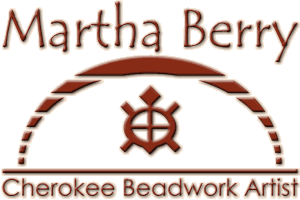
When The Highlands Met the Mounds
Beaded Bandolier Bag by Martha Berry
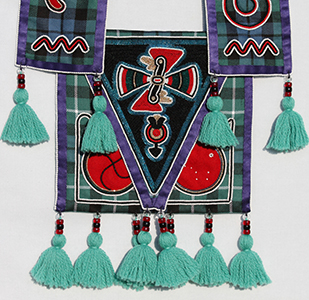
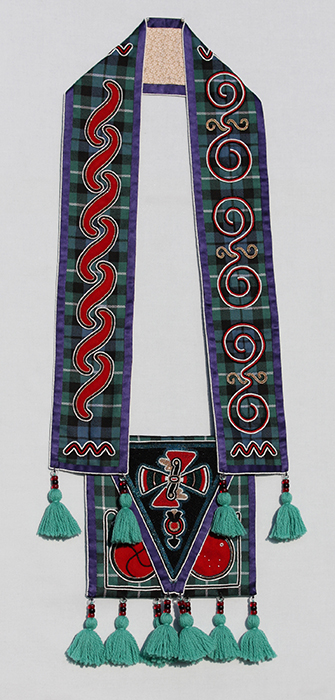
• Winner: Third Place, Cherokee Art Market, Tulsa, OK, October 2016.
Currently on display as part of Chiefs, Clans & Kin: Art of the Five Civilized Tribes from July 23 until Dec. 31, 2022, at the Choctaw Cultural Center, Durant, Oklahoma.
Size: Approx. 36"H x 16"W x 2"D
Materials: Glass seed beads, wool "Graham of Montrose Ancient" clan tartan, cotton, silk, wool yarn. To the extent possible, all materials are authentic to the late 18th century.
Notes: This bandolier bag required 248 hours to complete. Completed October 5, 2016.
This bandolier bag celebrates the power of the human spirit. I have used my own family to illustrate the ability of humankind to survive oppression and to navigate out of devastation into a new world of peace.
Cherokees have suffered defeats in unwanted wars, famine, legal manipulation, ethnic cleansing, relocation, persecution for cultural beliefs and practices, and other hardships at the hand of an occupying nation. In Scotland, the 18th century brought similar hardships to those who rebelled against English rule. They were called Jacobites.
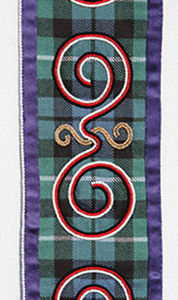
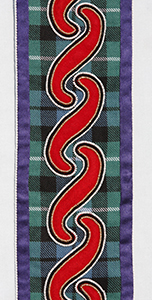
The Scots were persecuted for their culture and loyalties to their clan system. They were forbidden to play bagpipes and to wear their clan tartans, both hardships meant to strip them of their sense of identity as Scots. The Jacobites rebelled against the British crown but lost their civil war. The British army marched across the highlands, killing, burning and raping to the west coast. The Jacobites, and all who offered them aid, were formally cursed by the Archbishop of Glasgow. Many of the survivors moved to Ireland, and some to the colonies of what would become the United States.
The first Jacobite to marry into my Cherokee family came at the time of the American Revolution. Seven generations later, a descendant of another Jacobite family, the Grahams, turned up in Tulsa almost exactly two centuries later. His family had fled Scotland, moved to Ireland and changed their name, then meandered to Canada, Chicago, Kansas, and finally Oklahoma. In 1972, he met and married this Cherokee girl.
The materials and symbolism of this piece tell these stories. The wool fabric is the "Graham of Montrose Ancient" clan tartan. The bead designs are adaptations from artifacts found in the mounds of the Southeastern United States. The symbol on the pouch flap represents ordinary soldiers. Also depicted is the Sun, and the Ursa Major constellation and Polaris, the North Star.
Just as travelers have used the Sun and the North Star to navigate their way for thousands of years, our families found their way from east to west, from north to south, from oppression to peace. Like the tartan and the designs of this bag, we have merged. We remember who we were, we celebrate who we are.
 accepted.
accepted.